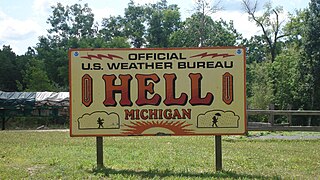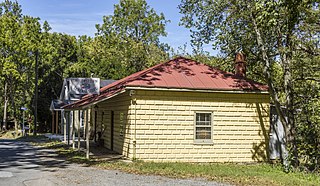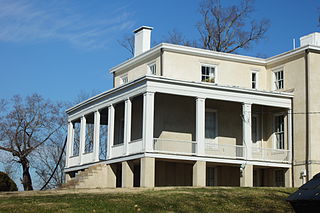
The Whiskey Rebellion was a violent tax protest in the United States beginning in 1791 and ending in 1794 during the presidency of George Washington, ultimately under the command of American Revolutionary War veteran Major James McFarlane. The so-called "whiskey tax" was the first tax imposed on a domestic product by the newly formed federal government. Beer was difficult to transport and spoiled more easily than rum and whiskey. Rum distillation in the United States had been disrupted during the Revolutionary War, and whiskey distribution and consumption increased after the Revolutionary War. The "whiskey tax" became law in 1791, and was intended to generate revenue for the war debt incurred during the Revolutionary War. The tax applied to all distilled spirits, but consumption of American whiskey was rapidly expanding in the late 18th century, so the excise became widely known as a "whiskey tax". Farmers of the western frontier were accustomed to distilling their surplus rye, barley, wheat, corn, or fermented grain mixtures to make whiskey. These farmers resisted the tax. In these regions, whiskey often served as a medium of exchange. Many of the resisters were war veterans who believed that they were fighting for the principles of the American Revolution, in particular against taxation without local representation, while the federal government maintained that the taxes were the legal expression of Congressional taxation powers.

Elijah Craig was a Baptist preacher in Virginia, who became an educator and capitalist entrepreneur in the area of Virginia that later became the state of Kentucky. He has sometimes, although rather dubiously, been credited with the invention of bourbon whiskey.

Hell is an unincorporated community in Livingston County in the U.S. state of Michigan. As an unincorporated community, Hell has no defined boundaries or population statistics of its own. Located within Putnam Township, the community is centered along Patterson Lake Road about 15 miles (24 km) northwest of Ann Arbor and three miles (4.8 km) southwest of Pinckney. The community is served by the Pinckney post office with the 48169 ZIP Code. Hell and Pinckney share the same ZIP code.

Waterford is an unincorporated village and census-designated place (CDP) in the Catoctin Valley of Loudoun County, Virginia, located along Catoctin Creek. Waterford is 47 miles (76 km) northwest of Washington, D.C., and 7 miles (11 km) northwest of Leesburg. The entire village and surrounding countryside is a National Historic Landmark District, noted for its well-preserved 18th and 19th-century character.

Taylorstown is a small community in Loudoun County, Virginia, built on the banks of Catoctin Creek and the surrounding hillside, about two miles (3 km) south of the Potomac River. First settled in 1734, it holds two of the oldest standing houses in Loudoun County, "Hunting Hill" and "Foxton Cottage", directly across the Catoctin Creek from each other.

John Work House and Mill Site is a site listed on the National Register of Historic Places in Indiana just outside Charlestown, owned by the Lincoln Heritage Council, (BSA), as part of the Tunnel Mill Scout Reservation. For a century, it was an active gristmill until technology made it obsolete, and arson destroyed much of it. Prominent features around the site are Fourteen Mile Creek and the Devil's Backbone. The land is now used by the Boy Scouts of America for camping activities such as National Youth Leadership Training and a Webelos Camp. In 2010, part of the Tunnel Mill camp was leased to a private company for the purpose of restoring the Historic John Work House for use as a living history center. In order to prevent vandalism and amateur ghost hunters from further damaging the building, security guards patrol the property each night.

Forest Hill Park, known for its "Stone house" called Boscobel, is a popular and historic 105-acre (0.4 km2) urban park in Richmond, Virginia. Starting as a private property, the park has had several owners and uses before its present one, the City of Richmond.

Jacobs Creek is a 33.4-mile-long (53.8 km) tributary of the Youghiogheny River beginning in Acme, Pennsylvania and draining at its mouth in the town of Jacobs Creek into the Youghiogheny River. Jacobs Creek is the southwestern border of Westmoreland County and the northwestern border of Fayette County. The area was a major producer of rye whiskey in the decades before Prohibition.

The A. Smith Bowman Distillery is a distillery that was originally based on the Bowman family's 7,200-acre Sunset Hills Farm in Fairfax County, Virginia, United States, in what later became the planned community of Reston. The distillery was founded in 1934 on the day after the end of Prohibition, by Abram Smith Bowman and his sons, Abram Smith, Jr., and DeLong. From the time of its founding until the 1950s, it was the only legal whiskey distillery in the Commonwealth of Virginia. The primary brands produced by the distillery were the Virginia Gentleman and Fairfax County bourbon whiskeys. In February 1988, it relocated to Spotsylvania County, near Fredericksburg, into a former FMC Corp. cellophane plant at One Bowman Drive, where operation continues as a microdistillery owned by the Sazerac Company.
Col. Johannes "John" Bowman was an 18th-century American pioneer, colonial militia officer and sheriff, the first appointed in Lincoln County, Kentucky. In 1781 he also presided as a justice of the peace over the first county court held in Kentucky. The first county-lieutenant and military governor of Kentucky County during the American Revolutionary War, Col. Bowman also, served in the American Revolution, many times, second in command to General George Rogers Clark, during the Illinois Campaign, which, at the time, doubled the size of the United States.
George Bowman was an 18th-century American pioneer, landowner and a prominent Indian fighter in the early history of the Virginia Colony. He, along with his father-in-law Jost Hite, was one of the first to explore and settle Shenandoah Valley. His estate, on which Fort Bowman was founded, was one of the earliest homes to be built in Shenandoah Valley and is the site of present-day Strasburg, Virginia.

Ravenswood is an eastern suburb of Launceston, Tasmania, Australia.

Locust Grove is a historic home located on a 32-acre (13 ha) tract. at Lynchburg, Virginia. It is a five-bay, double-pile, central-passage-plan. 1+1⁄2-story, timberframe, four end chimney Federal-style house.
George Washington's Gristmill was part of the original Mount Vernon plantation, constructed during the lifetime of the United States' first president. The original structure was destroyed about 1850. The Commonwealth of Virginia and the Mount Vernon Ladies’ Association have reconstructed the gristmill and the adjacent distillery. The reconstructed buildings are located at their original site three miles (5 km) west of Mount Vernon proper near Woodlawn Plantation in Alexandria, Virginia. Because the reconstructed buildings embody the distinctive characteristics of late eighteenth century methods of production and are of importance to the history of Virginia, the site is listed on the National Register of Historic Places despite the fact that the buildings are not original.

The Phleger Estate is a park in San Mateo County, California. The park is located outside the town of Woodside and adjacent to Huddart County Park. The park was acquired in 1991 by the Peninsula Open Space Trust (POST) for $25 million and is now part of the Golden Gate National Recreation Area (GGNRA).
Samuel Taylor Suit (1832–1888) was a Maryland politician and landowner. Suit was born in Bladensburg, Maryland, the son of innkeeper Fielder Suit. At age 14 he left home and traveled first to Keokuk, Iowa, and then to Louisville, Kentucky. In Kentucky Suit became involved in distilling whiskey, eventually owning a distillery and making his fortune. During this time he became an honorary Kentucky colonel and was known as Colonel Suit from that time onward. While in Kentucky he married his first wife, Sarah Ebenezer Williams, who died in childbirth at age 19.

Willett Distillery, also known as Kentucky Bourbon Distillers (KBD), Ltd., is a private family-owned and -operated company that produces bourbon and rye whiskey. Over the years the company has bottled whiskeys that range from 2 years of aging maturity up to 28 years.

The Taylorstown Historic District comprises the historic core of Taylorstown, Virginia. The community and the historic district are centered on the Taylorstown Mill, a two-story stone structure on the banks of Catoctin Creek. Up the hill from the mill is Hunting Hill, a house built in 1737 for the mill's owner. The district also includes a store built in 1800, adjoined by the 1904 Mann's Store, with the 1900 Mann house across the street.

Elk Hill, also known as Harrison's Elk Hill, is a historic plantation home located near Goochland, Goochland County, Virginia. It was built between 1835 and 1839, and is a 2+1⁄2-story, three-bay, stuccoed brick central-hall-plan house in the Greek Revival style. It has a two-story rear ell. The front facade features a one-story Tuscan order portico consisting of paired rectangular wooden pillars supporting a full entablature. Also on the property are the contributing servants' quarters, tack house, and spring house. It was listed on the National Register of Historic Places in 1979.















